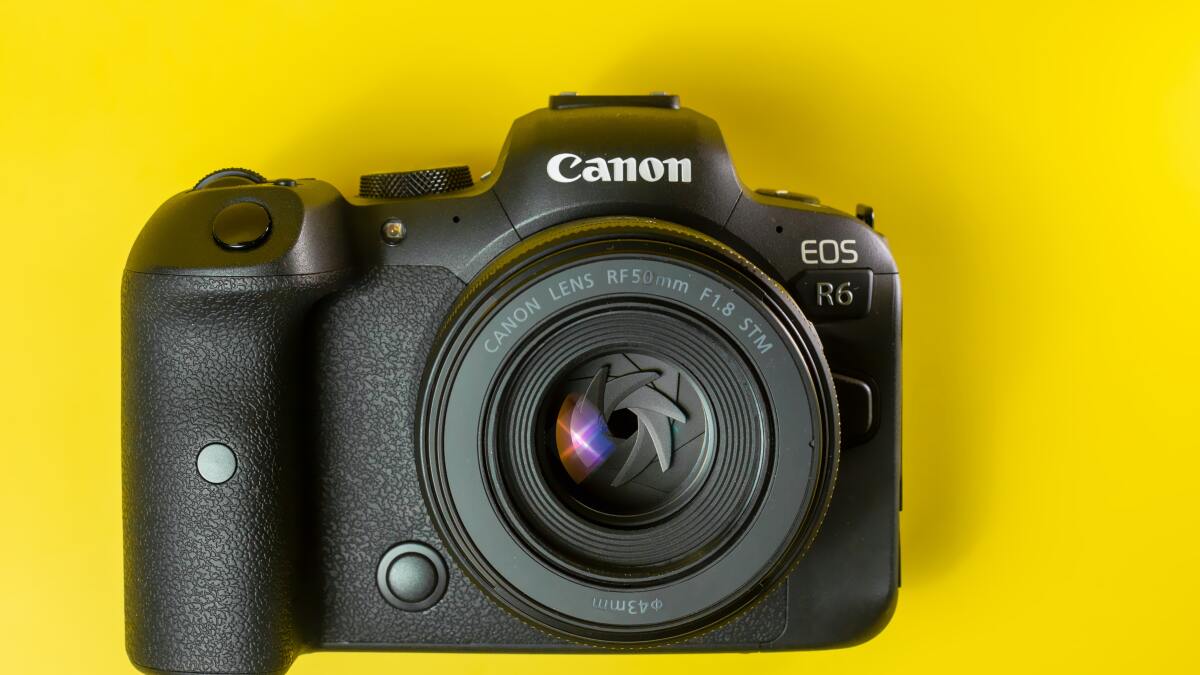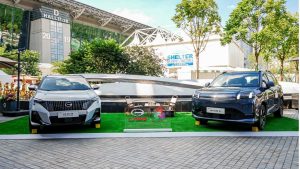
The best mirrorless cameras
You can do better than the camera on your smartphone. Yes it’s true that most people have taken on a sort of amateur photographer status, always ready to memorise a moment with their hi-res camera phone. We’re in the age of social media and sharing pictures, after all. But real photography demands real equipment. And what better way to get stuck into the world of photography than with a mirrorless camera?
Maybe you’re a camera newbie, or you’re looking to make the jump from a DSLR model? Perhaps you’re already a mirrorless devotee looking for a much-needed upgrade? Either way, mirrorless is the latest word in digital photography technology.
Knowing where to start is particularly hard for photography beginners, with all the jargon, specifications, and brand names to figure. But we can help bring things into focus and, well, put you in the picture. Here’s some useful information and a round-up of the best mirrorless cameras available right now.
What is a mirrorless camera?The clue’s in the title, though we appreciate that doesn’t make it any easier to understand. DSLR cameras reflect images into the camera’s viewfinder via a mirror, which is placed between the lens and the camera sensor. But mirrorless cameras use an electronic viewfinder (EVF), which is an LCD monitor on the back on the camera body. Light goes into the lens and is digitally converted and displayed on the monitor.
Is mirrorless better than DSLR?Mirrorless cameras — which are sometimes called hybrid cameras — have overtaken DSLR cameras as the most popular choice for photographers. The biggest selling point is that mirrorless cameras are lighter and much less clunky. They’re far easier to take on your travels and generally carry around. But that’s not all they’re good for. Here are some other great mirrorless camera features:
EVP Monitor — The monitor allows you to easily frame your subject in “live view” and access features via touchscreen. These monitors are often “vari-angle”, meaning they articulate outwards and in all directions, which is great for framing selfies.
IBIS — That’s the technical term for in-body image stabilisation. This essentially stabilises the sensor so you can shoot handheld, without needing a tripod or gimbal. Not all mirrorless cameras have IBIS but it’s increasingly common.
Autofocus — This is a standard camera feature but often clunkier in DSLRs. Mirrorless cameras can have very advanced autofocus that tracks faces and eyes or fast-moving objects. You may be able to refocus with a quick tap of the touchscreen.
4K Video — OK, so it’s not only mirrorless that shoots video. Some DSLR shoot video too, but mirrorless are geared towards better video performance and features. Shooting in 4K sometimes crops the image (it depends on how advanced the camera is) though you can also find mirrorless cameras that have 6K-8K quality resolution.
Other features, though not exclusive to mirrorless, include WiFi and Bluetooth, app support, and fast burst speed rates (measured in frames per second — fps).
How are the drawbacks of mirrorless cameras?There are always pros and cons. Due to the reduced size, mirrorless battery power isn’t always as good as DSLR cameras, and mirrorless cameras do tend to be more expensive. Another common complaint is that because the technology is newer, there are fewer lens and accessory options. But that’s a temporary issue.
How much does a mirrorless camera cost?We won’t lie to you. They’re not exactly cheap. The lowest priced camera on this list is around £500 and they can easily cost thousands of pounds. Even beginners can expect to spend somewhere around the £500 mark. The photography game is pricey.
What is the best mirrorless camera?That’s a question only you can answer, because every photographer is different. Whether you’re a beginner, enthusiast, or professional, there’s a camera that’s just right for you — but it might not suit the photographer next to you. Because just like the actual photos, no two photographers are the same. But we can help you find the best mirrorless camera for you by pointing you toward some impressive models and putting them in (auto)focus. The choice is yours. We’re just trying to give you a clear picture.
These are the best mirrorless cameras in 2025.
The Good & The Bad
Nice little package
Affordable
Upgraded autofocus
Stills focused
Not as strong for video
Micro USB charging only
Why We Like It
First up, the price of this camera is very attractive for a mirrorless newbie. Indeed, at just under £800 — and often found on sale with more than £100 off — the Olympus OM-D E-M10 Mark IV is one of the most affordable options on this list. OK, so it’s not going to compete with the spec of higher-end (more expensive) models, but there’s still plenty to get excited about.
It’s has a Micro Four Thirds system, which means it balances portability with image quality by using a smaller sensor that shoots in a 4:3 ratio — in this case a 20-megapixel sensor. The image quality is well-rated — as good as higher-spec cameras, according to some reviewers. This continuous autofocus isn’t always perfect, but as long as you’re not expected to capture major action shots, it will more than suffice. It also has a well-reviewed in-body stabilisation, which is actually a step up from some more expensive mirrorless cameras, some of which don’t have any type of stabilisation whatsoever.
This Olympus is perhaps better geared towards stills than shooting video, though it has 4K capabilities and an articulated LCD monitor for helping film yourself vlog-style. As a beginner-level camera, it’s well recommended.
Details
The Good & The Bad
Second gen autofocus
Canon lens range
Beginner-friendly handling
Not a bad price
Cropped 4K
Why We Like It
Here’s a term you’ll see a lot when researching cameras: Enthusiast. It means a step-up from beginner but not quite pro-level — a keen photographer who knows their stuff but isn’t ready to shell out for the best-of-the-best (or the most-expensive-of-the-most-expensive).
With that level in mind, the Canon EOS R10 is a clearcut top pick. Some reviewers label it as a beginners’ camera but its spec is just a little too impressive for that. It’s entry level and accessible, sure, but it’s also a camera that someone with decent knowledge and an eye for detail will appreciate.
The Canon EOS R10 packs in a 32.5 image sensor, a second-gen Dual Pixel CMOS autofocus system, and Digic X processor. The autofocus is sharp and fast, with deep-learning AI that recognises faces and eyes and the smarts to also track animals or vehicles. It also has a hi-res viewfinder and vari-angle touchscreen for live view, which is good for vlogging.
It shoots cropped 4K video at 60fps but that’s usually he case in this price range (this camera gives you uncropped 4K at 30fps, however). It’s not a dealbreaker for everyon, of course, but worth noting. There’s also no in-body image stabilisation, in case that’s a must-have feature.
Details
The Good & The Bad
Hi-spec AF system
Rapid shooting speeds
For action & nighttime shooting
Great video capabilities
Nice viewfinder
Higher res available
Obviously not cheap
Why We Like It
If you’re able to spend a bit more cash on a mirrorless camera, the Nikon Z6 III is stacked with attractive features and slick video capabilities.
The real clincher for us is an advanced autofocus system, which has 299 AF points across the sensor and delivers autofocus across the entire frame of your shot. It can recognise faces — of people and animals — and hones in on the eyes. Even more than that, it can autofocus in seriously dark conditions. If you’re a nighttime photographer, this camera is worth the money.
It’s similarly great for shooting action or moving objects. That’s down to an incredible top shooting speed of 120fps. It overdelivers on video too, with a resolution of 6K and up to 60fps or 4K at 120fps. Experts have also rated the OLED hi-res viewfinder as one of the best ever found on a camera like this.
If there’s a notable drawback, it’s that the sensor’s megapixel count of 24.5MP is comparatively low. Whether or not that’s an issue is up to the individual photographer and the kind of thing they like to shoot (if you prefer to shoot highly-detailed still subjects, maybe shop elsewhere) but that doesn’t stop this from being one of the best mirrorless cameras from the Nikon range.
Details
The Good & The Bad
Stacked sensor
Intelligent AF technology
Sports & action mode
Upscaling technology
Super quality images
Pro spec, pro price
No lenses included
Why We Like It
Get ready to spend big, because the Canon EOS R5 Mark II is a seriously pricey bit of kit. Indeed, this one’s for professional photographers only. But if money is no object, or you’re willing to stretch your budget, this is our top pick for a top-of-the-line, premium-level mirrorless camera.
It’s absolutely stacked with superb features, which come partly thanks to a stacked 45MP sensor and processor combo that delivers ultra-fast, accurate, and incredibly detailed images. That’s further bolstered by a smart autofocus system for action shots. It can recognise specific sports in Action Priority mode and intelligently decides where and how to focus. Meanwhile, eye-control AF determines where you are looking and adjusts the AF point as required.
It also shoots 8K video at 60fps or 4K at 120fps, which is next level performance compared to other cameras on this list, and has a shutter speed of 1/32,000. That’s everything you need for professional video shooting.
Other features include an 8.5 stop image stabilisation and in-camera upscale editing that can increase the size of your images for cropping or printing, and WiFi 6 for easy sharing. As far as we’re concerned, this is the best mirrorless that money can buy. It’s just a case of having that kind of money to spend.
Details
The Good & The Bad
Small and compact
Excellent autofocus
60+ compatible lenses
Flip screen
Directional mic & windshield
No IBIS included
No regular photo viewfinder
Why We Like It
There are plenty of good cameras out there for vlogging, but for us the Sony Alpha ZV-E10 just has to take the top spot. This is not a camera with a few vlogging features tacked onto the bundle. The Sony Alpha ZV-E10 is a camera that’s made specifically for vlogging and content creation.
Not only is it pocket-sized for taking any and everywhere, it has a fully-articulated flip-out touchscreen monitor so you can frame yourself within shot, and a three-capsule directional microphone with an included wind muffler.
If you like to vlog about products influencer-style, there’s a product showcase feature that automatically focuses on products when you hold them up – whether it’s a nice bit of tech, a fashion item, or something else — and if you want to make yourself the star of the show (isn’t that what vlogging is all about?) you can blur the background with the press of a button.
The real star of this little package is the impressively-fast autofocus, which locks onto your eyes and face and helps deliver excellent 4K video. There’s no in-body stabilisation, so it may take a little time to master those smooth shots. But that’s really not an issue if you’re vlogging with a tripod.
Details
The Good & The Bad
Competitive video features
Dual control dials
Classic DSLR handling
Vari-angle touchscreen
More affordable than most
No IBIS
Autofocus isn’t the best
Why We Like It
Calling £500 “cheap” is a stretch, we know. But in the world of mirrorless cameras it’s a bargain when you’re getting value for money. And the Panasonic Lumix DMC-G7 certainly offers that, making it a well-recommended budget buy. Great for beginners or anyone who’s being careful with their cash.
It’s also a option for anyone making a tentative jump from DSLR to mirrorless. Some reviewers have noted that this camera feels and handles like a DSLR, so it could be a good in-between point — though it also feels plasticky, which is the mark of buying at the budget end of the market.
It has a 16MP Micro Four Thirds sensor, plus all the features you need at this level: A max burst speed of 8fps, built-in WiFi, and a vari-angle touchscreen for shooting 4K video. In fact, video is where this one excels — arguably the thing that really sets it apart from similarly-priced DSLRs features-wise. The video autofocus and exposure control are highly rated, certainly for the price.
The autofocus is where this camera is most lacking. It may struggle to keep up with anything too complex or fast, and tracking focus can slow down the burst shooting rate. But you’re unlikely to buy this camera for anything more demanding that entry-level photography. Overall, there’s a lot to like — a camera that’s opens up the creative potential of the mirrorless system.
Details











